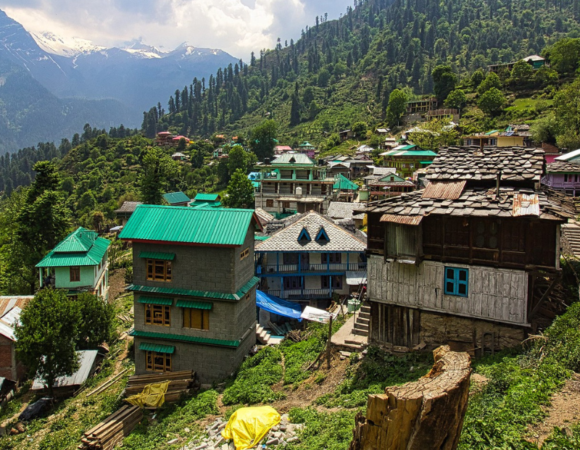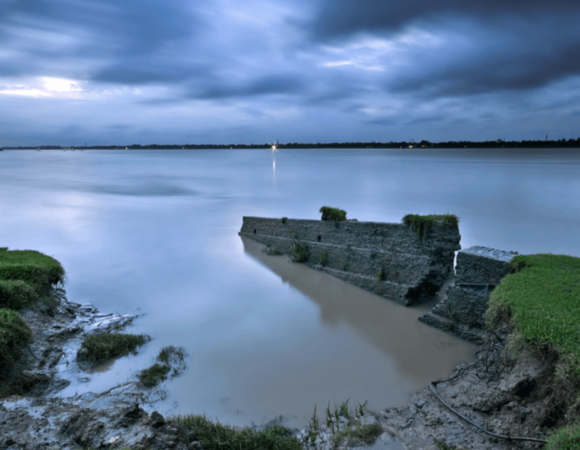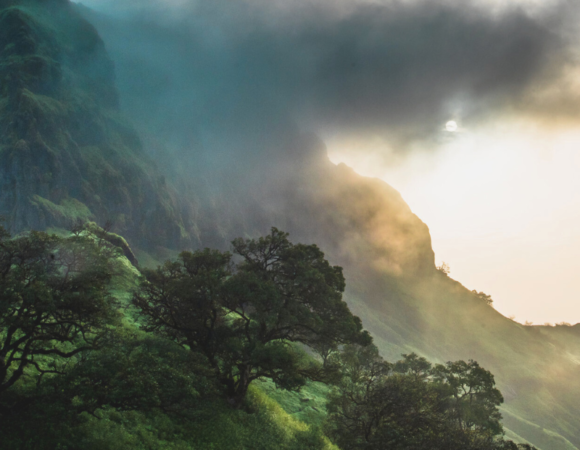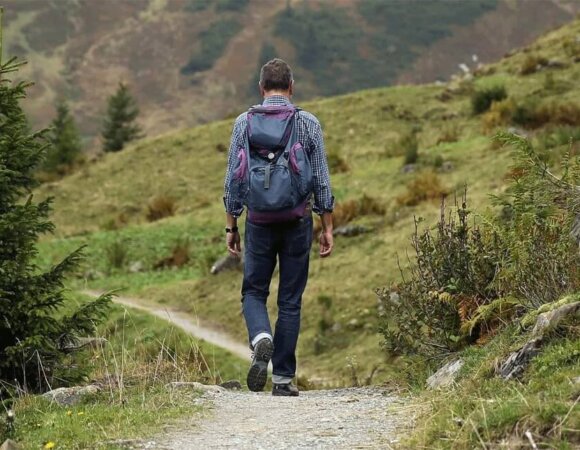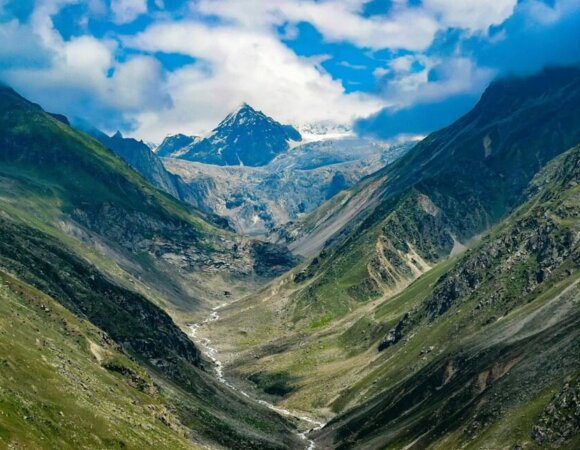Source of Ganges Trek Guide 2024: History, Highlights, Best Season, How to Reach and Itinerary
Table of Contents
ToggleGaumukh, often spelled “Gomukh” or “Gomukhi,” is the source of the Bhagirathi River known as “Source of Ganges Trek”. It is at the point where the Bhagirathi river emerges from the Gangotri glacier (seen below) and runs downward to become the River Ganga. It is around 18 kilometres from Gangotri and at an elevation of 13,200 feet (4,023 meters).
The motorable road terminates at Gangotri and the remaining distance to Gaumukh is only accessible on foot. It is a renowned Hindu pilgrimage site because of its religious significance, and it is also a popular trekking destination because the trek is neither too strenuous nor too easy. The term “Gomukh/Gaumukh” literally means “Cow’s Mouth.”

The snout of the Gangotri glacier, from which Bhagirathi emerges is claimed to have resembled the “Mouth of a Cow” in ancient times, hence the name. The trek’s difficulty can be rated as moderate, but it does get strenuous and steep at times. A permission from the District Forest Officer in Uttarkashi or the Gangotri Forest Office is necessary to hike to Gaumukh. There is a daily maximum of 150 licences each day, which are provided on a first-come, first-served basis.
History of Source of Ganges Trek
Goddess Ganga, as per the Hindu legend, took the form of a river to atone for the sins of King Bhagiratha’s forefathers after his centuries-long penance. Lord Shiva received into his matted locks to lessen the massive shock of her fall. At her mythological birthplace, she was given the name Bhagirathi.
After killing the demons on Earth, King Sagar decided to perform an Ashwamedha Yagya as a declaration of his dominion. The horse, which was to travel across the world indefinitely, was to be joined by the King’s 60,000 sons born to Queen Sumati and one son Asamanja born to the second queen Kesani. Indra, the supreme ruler of the gods, feared that the ‘Yagya’ would deprive him of his heavenly throne, so he grabbed the horse and tethered it to the monastery of Kapil Muni, who was in profound meditation during that time.

The horse was eventually discovered tethered beside the meditating Kapil by King Sagar’s sons. Sixty thousand of King Sagara’s enraged sons assaulted the ashram of guru Kapil. When he opened his eyes, all 60,000 sons were found dead as a result of guru Kapil’s curse.
Bhagiratha, King Sagar’s grandson, is said to have pondered in order to appease the Goddess Ganga enough to wash his forefathers’ ashes and release their spirits, bringing them salvation or Moksha. Another legend has it that Ganga, a lovely and lively lady, was born from Lord Brahma’s kamandalu (water vessel). There are two myths behind this particular birth.
According to one legend, Brahma cleaned Lord Vishnu’s feet after the latter slew the demon Bali in his rebirth as Vaman, and gathered the water in his kamandalu. Another myth says that the Ganga came down to the surface in human form and married King Shantanu — a progenitor of the Pandavas of the Mahabharata, who gave birth to seven children, who were thrown back into the river by her in an unfathomable way.
Thanks to King Shantanu’s intercession, the eighth child – Bheeshma – was saved. Ganga, on the other hand, abandoned him. Throughout the Mahabharat’s magnificent epic, Bheeshma played a key role.
| Area | Garhwal Himalayas Uttarakhand. |
| Duration | 9 days |
| Best Season | May – June – September – October |
| Grade | moderate |
| Altitude | 5230 mts |
| Approximate KM | 70 km |
Highlights of Source of Ganges Trek
- Views of Shivling and the Bhagirathi peaks are spectacular.
- Temples in Gangotri.
- Hike from Bhojwassa to Gaumukh and the Ganges’ source.
- Gomukh Glacier’s snout
- The Ganga Aarti Ceremony and Rishikesh
- Uttarakhand’s Remote Villages
Best Season to Visit Source of Ganges Trek
Summer (May – June) and post-monsoon (September – October) are the best seasons to visit Gomukh Tapovan.
During the summer, the weather in Gangotri is pleasant. The Himalayan Mountains may be seen clearly.
During the monsoon season, the greenery of Gomukh Tapovan invites visitors to immerse themselves in nature’s wildness. At Tapovan, enjoy gazing at the snow-capped peaks.
There is a danger that roads will be closed for a few hours due to landslides, but the beautiful grandeur of Gomukh Tapovan during the monsoon season is worth the risk. The region is coated in snow throughout the winter season, and lodging alternatives are limited.
However, Gomukh and Tapovan look the finest during winters, making the trip more challenging.
How to Reach Source of Ganges Trek
By Air
The nearest airport to Gangotri is Jolly Grant, which is only 26 kilometres from Rishikesh. To reach Gangotri, travellers can take a taxi or one of the luxury buses from the airport.
By Rail
The nearest railway station is at Rishikesh, approx 250 kilometres away, from where one must rent a cab or take a luxury bus to Gangotri. Rishikesh is not well served by rapid trains, and Kotdwar has a limited number of trains.
As a result, if you are travelling to Gangotri by train, Haridwar is the ideal railway station to pick. Many trains go to and from Haridwar from all around India.
By Road
Gangotri is conveniently navigable from most major towns in Uttarakhand, Uttar Pradesh, Delhi, and the National Capital Region. It is 452 kilometres from Delhi and 229 kilometres from Rishikesh..
Location of Source of Ganges Trek
Gangotri is located in the Uttarkashi District in Uttarakhand state, at an elevation of 3,048 metres above sea level. Gaumukh is around 18 kilometres from Gangotri, although Tapovan is approximately 9 kilometres from Gaumukh.
Itinerary of Source of Ganges Trek
Day 01 : Delhi – Haridwar – Rishikesh
At 06:50 a.m., board an AC train bound for Haridwar. After arriving Haridwar, meet our guide who will assist you in getting to Rishikesh and checking into your accommodation. Evenings are free for recreational activities. Stay at the hotel for the night.
Day 2 : Rishikesh to Uttarkashi (170 km/4-5 hours)
Following breakfast, we will depart for Uttarkashi, which will take around 7-8 hours to reach. When you arrive in Uttarkashi, you will be taken to the pre-arranged hotel. Evenings are set aside for local touring. The hotel will provide dinner and an overnight stay.
Day 3 : Drive from Uttarkashi to Gangotri (3048 m/10,000 ft) (95 kms)
Today, we will go to Gangotri through Harsil early in the morning (approx 25 km). Check into the hotel and spend the night after arrival.
Day 04 : Gangotri – Bhojwassa (3792 mts/12440 ft) 13 kms trek/5-6 hrs)
Following breakfast, we will go to Bhojwassa via Chirbasa. To reach Chirbasa, we’ll trek along the raging Bhagirathi River. We will hike from Chirbasa to Bhojwassa through a deep jungle. Reach Bhojwassa and set up a tent by the river.
The afternoon is free to explore the region and watch the sunset over the Bhagirathi peaks. Tents are used for dinner and overnight stays.
Read more: Kuari Pass Trek
Day 05 : Bhojwassa – Gomukh (3890 m/12760 ft) – Tapovan (4463 m/14640 ft)
Today, after breakfast, we will go to Gomukh (3890m), the Ganges’ source. We’ll go on to Tapovan after touring Gomukh. Tapovan is a sprawling meadow dotted with streams and wildflowers. Bharal (blue mountain goat) herds are a familiar sight from the mountain ridges. Dinner and an overnight stay will take place at the camp.
Day 06 : Tapovan (4463 mts / 14640 ft)
The day will be set aside for relaxation. Explore the Kirti and Meru Glaciers. Dinner and an overnight stay at the camp are included.
Day 07 : Tapovan – Bhojwassa – Bhojwassa – Bhojwassa – Bhojwas (Trek 4-5 hrs)
Enjoy the dawn over the high peaks in the early morning. Trek down to Bhojwassa after breakfast. Arrive in Bhojwassa and make camp. Dinner and an overnight stay at the camp are included.
Day 08 : Bhojwassa – Gangotri (4-5 hour trek) – Uttarkashi (95 km/4 hr trek)
After breakfast, hike to Gangotri and then drive to Uttarkashi. Check into the hotel after arrival. Stay in the hotel for the night.
Day 9 : Uttarkashi-Hridwar-Delhi
After breakfast, drive to Haridwar and board an AC flight from there. The train to Delhi departs at 18:05 hours. Arrival in Delhi at 22:45 p.m.
Frequently Asked Questions (FAQ’s) for Source of Ganges Trek
How long does the Ganges Sources journey take?
Ganges trek sources last for 9 days.
What is the weather like during the Sources of the Ganges trek?
During the summer, the average temperature in Gomukh and on the walk is approximately 15°C to 16°C, while during the months of September, October, and November, it is around 5°C to 6°C. In December, January, and March, the region is completely inaccessible due to heavy snowfall with temperature far below zero degrees.
Is it possible for a novice to travel to the Ganges River’s Sources?
The Sources of Ganges walk is moderate to challenging in difficulty.
How high is the Sources of Ganges trek?
Gaumukh is 13,200 feet above sea level.
Where are the Ganges Trek’s sources located?
Gangotri is in the Uttarkashi District in the state of Uttarakhand.
When is the ideal time to see Ganges trek sources?
Summer is the best time to visit Gomukh Tapovan.

